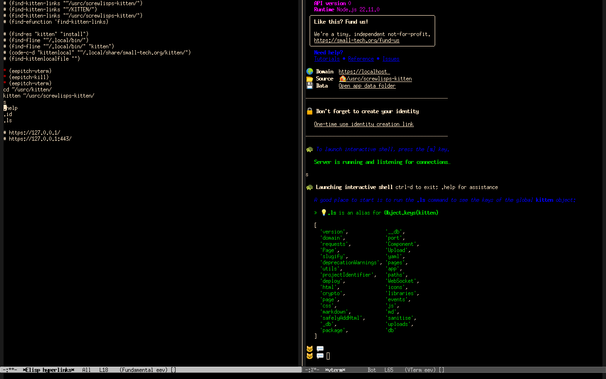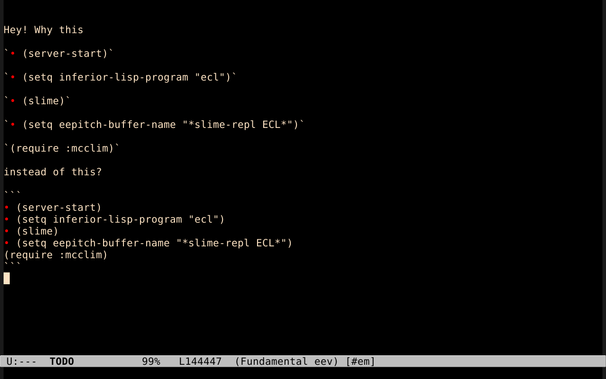@screwlisp Hi!
Sorry for the delay!
I just got back from the conference...
Here are some things that you might like.
First, a way to speed up moving "index lines" to the "index":
(find-edit-index-intro)
Second, a convenient way to generate "hyperlinks to here":
(find-kl-here-intro "2. Try it!")
Third, the best way to understand the cases supported by `M-x kl' and `M-h M-h':
(find-here-links-intro "8. Debugging")
Btw, you asked me about the early influences of eev... I was sure that
there were some important ones that I had forgotten, and I took a look
at some of my e-scripts from the late 90s and early 2000s... and
ta-da, found them!
At that point I was using Expect a lot, and I was writing lots of
small Expect programs to help me use interactive programs by typing
fewer keystrokes... see this to get an idea of how we can use Expect
to define shorthands and how to define automatic answers to strings
sent by the controlled program:
(find-man "1 expect" "interact [string1 body1] ...")
(find-man "1 expect" "interact [string1 body1] ..." "The -o flag")
Then I created this,
(find-channels-intro)
that was very hard to set up, but that gave me a way to send the
current line in Emacs to an external program running in an xterm. That
worked so well that I stopped using both the shorthands and the
automatic answers.
Then in 2006 this happened,
http://lists.gnu.org/archive/html/eev/2006-01/msg00000.html
http://lists.gnu.org/archive/html/eev/2006-02/msg00000.html
http://lists.gnu.org/archive/html/eev/2006-02/msg00001.html
and I practically stopped using Expect.
In my Expect days I would define abbreviations like this:
`~l' sends `load("myqdraw3.mac");'
but then I changed that to moving the point to a line with the
`load("myqdraw3.mac");' and typing f8 or f9.
So: I started with a more familiar interface, in which I had key
sequences that acted as buttons that sent certain (long) strings to
the controlled program, and then I replaced these "buttons" by lines
on the screen, and all my lines/buttons became very easy to edit and
to execute... and Emacs became a 2D interface for controlling external
programs.

